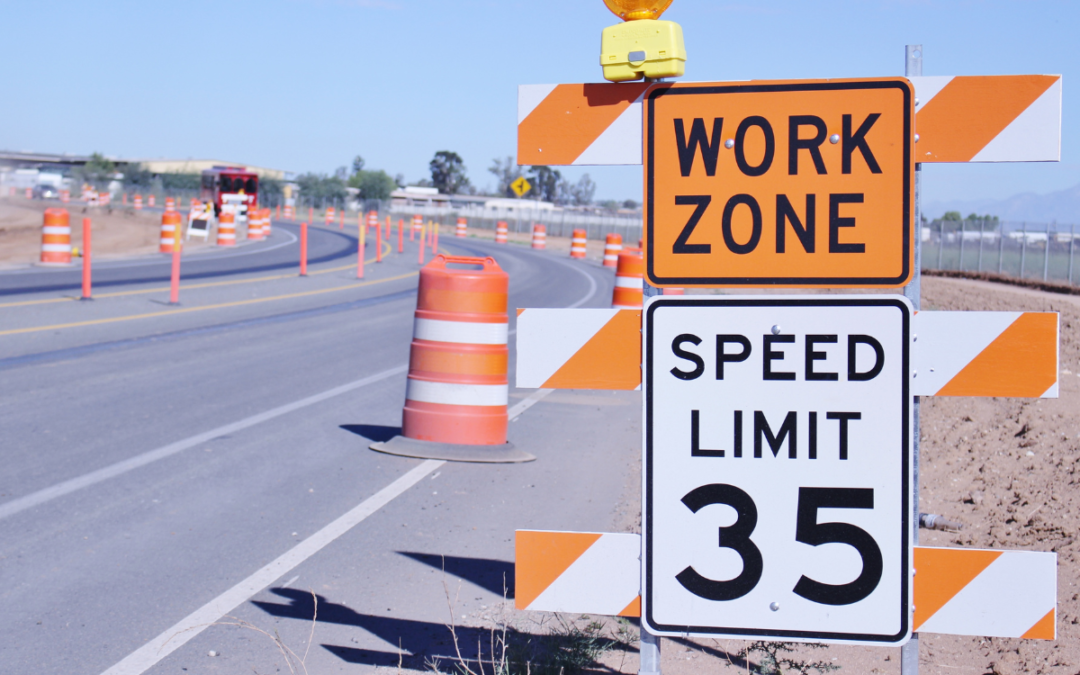Driving in Construction Zones | A Comprehensive Guide from the California Driver Handbook
Defensive Driving |
Construction zones are a common sight on California’s roadways, with ongoing infrastructure improvements and repairs. While these zones may cause inconvenience and delays, it’s crucial to prioritize safety for yourself, construction workers, and fellow drivers. In this article, we will provide an in-depth guide on driving in construction zones, referencing key information from the California Driver Handbook.
This blog may contain affiliate links, and if you make a purchase through these links, we may or may not earn a commission at no extra cost to you.
Obey Posted Speed Limits
Construction zones often feature reduced speed limits. The California Driver Handbook emphasizes the importance of adhering to these posted speed limits. Slower speeds ensure safer conditions for both drivers and workers.
Stay Alert and Focus on the Road
Distractions can be dangerous in construction zones. Remember to maintain your full attention on the road at all times. Avoid texting, talking on the phone, or engaging in other distractions that can lead to accidents.
Follow Construction Signs
Construction signs provide crucial information about lane closures, detours, and potential hazards. The handbook underscores the importance of obeying these signs, as they guide drivers safely through the work area.
Maintain a Safe Following Distance
Leaving extra space between your vehicle and the one in front is vital. This allows for a more extended reaction time in case of sudden stops or lane closures, reducing the risk of rear-end collisions.
LEARN MORE: Safe Spacing
Be Prepared to Merge Early
When approaching lane closures, it’s advisable to merge into the appropriate lane as soon as possible. The California Driver Handbook discourages last-minute merging, as it can lead to unsafe situations.
Exercise Patience
Construction zones can be frustrating due to slower traffic and potential delays. However, patience is key. The handbook highlights the importance of remaining patient and avoiding aggressive driving behaviors.
Be Mindful of Workers and Equipment
Construction zones often involve workers and heavy machinery. The handbook stresses the need to be cautious and provide ample space to these workers and equipment. Sudden lane changes or abrupt maneuvers should be avoided.
Use Turn Signals
Signaling your intentions when changing lanes or merging is essential in construction zones. Proper use of turn signals helps maintain a smoother traffic flow, reducing the risk of accidents.
Reduce Speed in Adverse Weather
In adverse weather conditions, such as rain or fog, the handbook recommends reducing your speed further. Poor visibility and road traction make construction zones more hazardous during inclement weather.
RELATED ARTICLE: Driving in Bad Weather
Driving on Diverse Road Conditions
Obey Construction Workers’ Instructions
If workers are present, their instructions should be followed without hesitation. Construction workers are trained to direct traffic safely through construction zones, and their signals take precedence over road signs. If a construction worker waves you through a stop sign, you should proceed through the intersection without stopping.
Driving through construction zones requires a combination of vigilance, caution, and patience. By following the guidelines and insights from the California Driver Handbook, you can navigate construction zones safely, contributing to a safer road environment for everyone. Remember that construction zones are temporary and aim to improve our infrastructure. Your cooperation and responsible driving in these areas help ensure the safety of all road users, including the dedicated workers striving to enhance our roadways.
Drive with Confidence!
Keep up with all the latest driving news. Expolre our blog packed with essential tips and expert advice on all things related to DRIVING!




